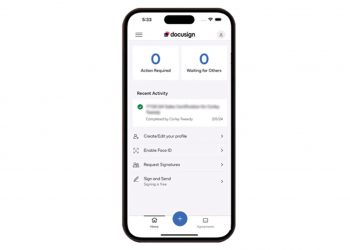We often hear from relocation directors and their brokers that they are feeling disenfranchised these days. Their core services for incoming transferees—personalized, needs-based, locally expert and top agent-supported—are too often bypassed by an internet-oriented generation that equates “electronic” with “faster and better.”
You already know that destination decisions are among the most critical to relocation success, yet corporate employers have tended to underserve their transferees in this regard. Employers usually pay more attention to the big-ticket relocation items like home sales, household goods and taxes. Destination services may feel to them like a soft need—an employee discretionary choice warranting little service investment.
This has fostered an opportunity for alternative destination services. If you’ve encountered the latest wave of web-based destination content providers, you’ll admit they’re doing some very good things. Especially for transferees receiving limited corporate assistance, they tend to offer a user-friendly platform with a framework for self-managing a move, good area information and access to their preferred provider networks, including real estate.
This is attractive and economical for employers seeking an expedient fix for their lower policy tiers in particular. These firms are emerging as formidable competitors for traditional relocation management companies, and as such, a threat to their established real estate referral networks—and ultimately, your third-party referral volume.
All is not doom and gloom, though, because what the generic web-based providers cannot do is right in the wheelhouse strengths of the local/regional relocation director: customized and client-specific destination solutions accessible only through your department and firm. You can become an indispensable cog in a client’s relocation program by:
- Recognizing a company’s special inbound population
- Profiling their area and housing needs and preferences
- Determining their employer’s specific policy features
- Defining a responsive bundle of destination services
- Assembling and training a qualified service team (staff and agents)
- Co-marketing your special local offerings into the client organization
How can you discover such unique opportunities? Your homework includes ongoing dialogue directly with area employers, but with a new slant—workforce changes, inbound demographics, talent/hiring challenges, housing supply/affordability—to unearth their staffing challenges and mobility hurdles. As you develop a customized program, you can also gain the employer’s endorsement and tap their leverage to form a local partnering arrangement with their RMC, making you a client-directed provider. Here are some cases in which real estate companies accomplished all this:
The Texas Two-Step – A cutting-edge technology company headquartered in Texas was experiencing explosive growth. The soaring local housing market was obvious, fueled by all the incoming executive and management buyers. Less prominent, though, were the huge waves of new-hired fresh college grads, as many as 2,000 per year. The usual real estate infrastructure was not equipped for this. One enterprising company saw this as a chance to endear itself to this employer and all those incomers. It built a special welcoming package for area information, lifestyle options, commutation details and, of course, rental housing. It established an on-site Welcoming Center in the company’s headquarters and maintained updated rental listings. It helped settle many new residents, gained huge prominence and loyalty within the company, and received residual referrals for years to come.
Life in the Colonies – A large company of U.S. origin was acquired by a European conglomerate, resulting in a big initial influx and ongoing stream of Euro executives and managers. The now-subsidiary U.S. company had no past experience in supporting such inbound assignees and problems arose in their onboarding and settling in. One company spotted the market niche they represented, and pursued it by recruiting culturally matched agents, researching the employer’s housing provisions for assignees, monitoring availability of appropriate housing listings and rentals, and sponsoring ongoing Euro-themed social networking events for the assignees and their families. This ingratiated them to both the assignees and the corporate mobility team.
Win/Win Homefinding – A major U.S. manufacturer has large operations in a number of remote locations where it is by far the dominant employer. Its workforce is the biggest influence on the local housing markets, and its relocation programs are unusually expensive. Knowing that its own people were the only likely buyers for each other’s homes, it pays incentives to attract inbound employees and assures them of market value sales when they leave those locales. A clever real estate firm saw these policies as a great sales tool. It maintained a roster of all the available local listings owned by company employees, and featured them to incoming transferees. Sellers benefited from faster sales and capturing company incentives that afforded lower sales prices. Transferee buyers could afford better houses because of discounted prices and buyer incentives on employee-owned and inventory properties. The company’s cost of incentives was more than offset by reduced transitional costs, fewer inventory homes, shorter resale times, smaller loss-on-sale reimbursements and expedited recruiting and relocations.
With unique circumstances come creative opportunities that can build your near-term business and sustain lasting client relationships. Try to find the special staffing challenges that your neighbor companies face. Maybe you can be the source of a profitable solution.
John B. Sculley, SCRP, is vice president – managing director, RIS Consulting Group. Please email him your comments and questions at john.sculley@rismedia.com.
For the latest real estate news and trends, bookmark RISMedia.com.










